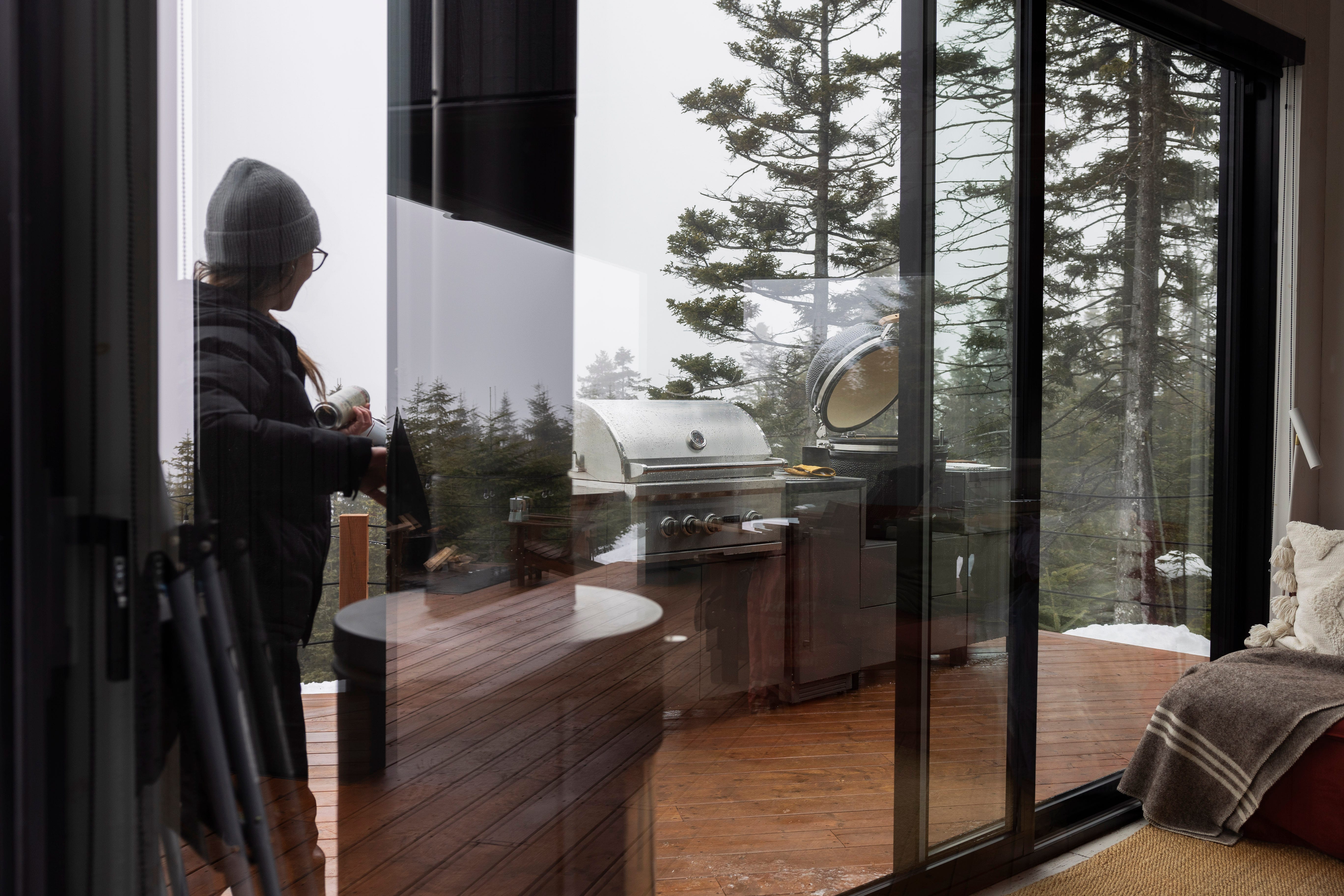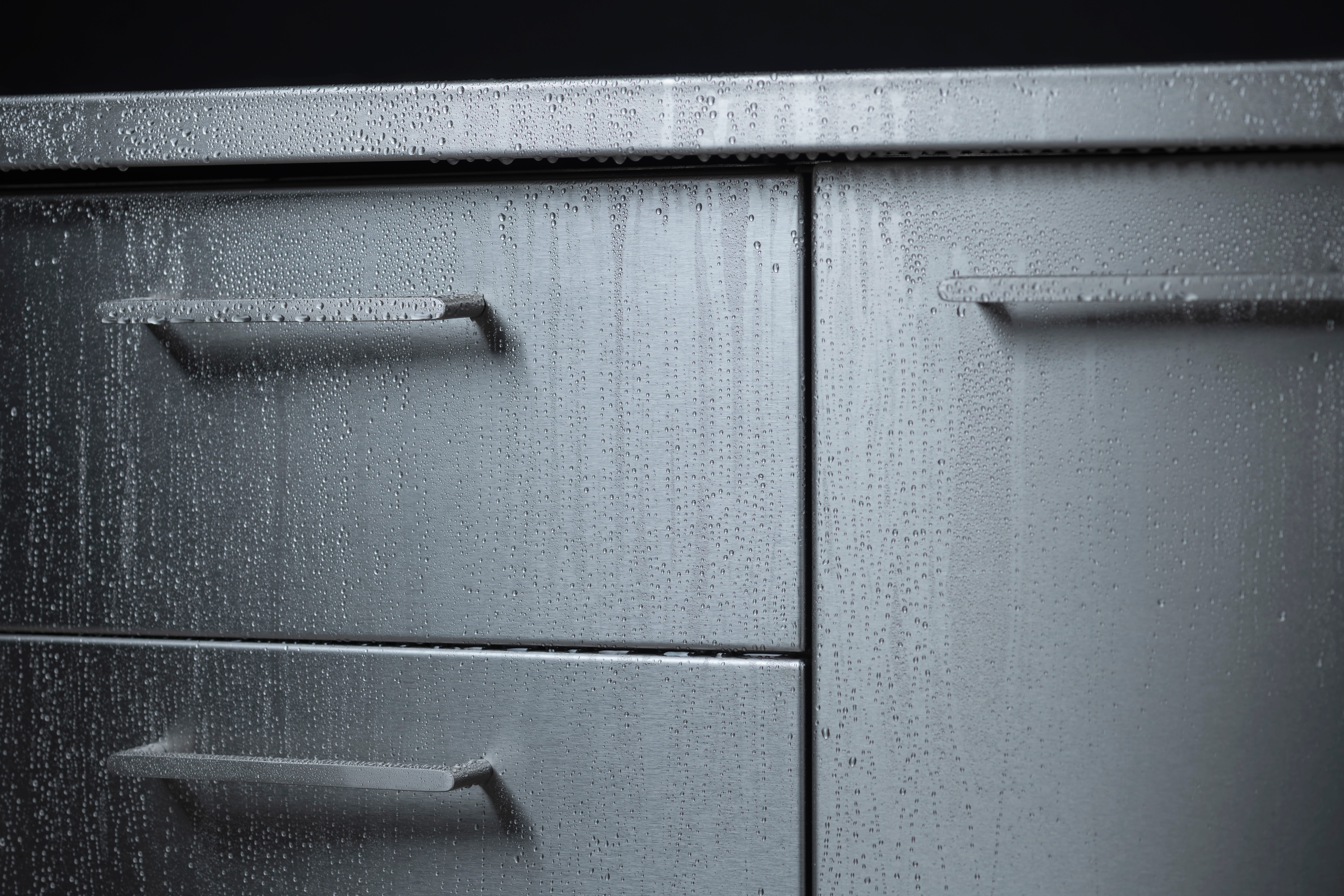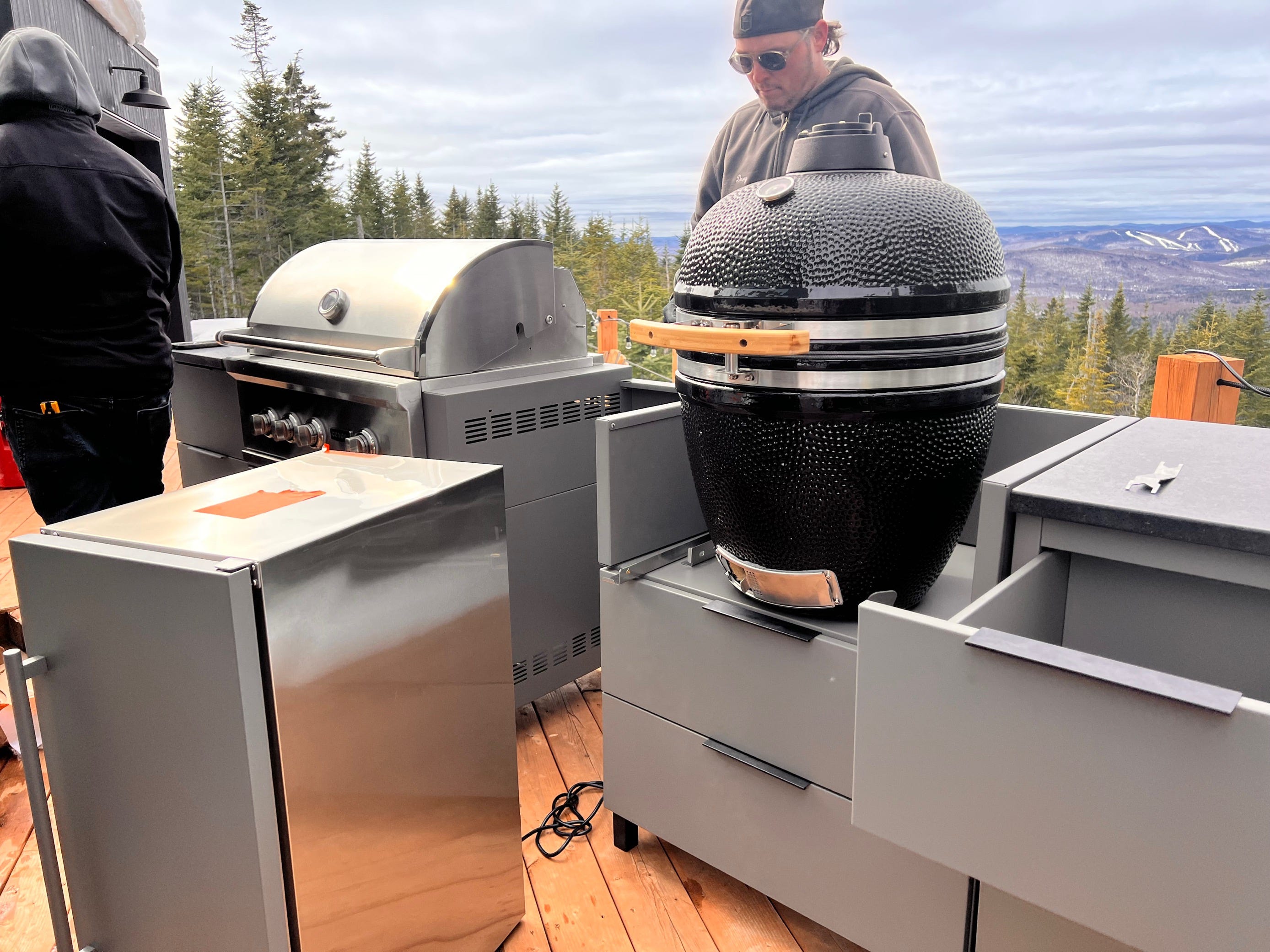When you think of grilling outdoors, sunny skies and warm weather likely come to mind. Summer cookouts are a timeless way to enjoy great food and quality time with family and friends.
However, unlike a standalone grill you can stash in the garage, your outdoor kitchen is built to stay outside year-round. While high-quality outdoor kitchens are designed to withstand the elements, taking steps to winterize your kitchen ensures it stays in top shape for years to come.
Here’s everything you need to know to protect your outdoor kitchen through the cold months.


When Should You Winterize Your Outdoor Kitchen?
The goal of winterizing is simple: protect your kitchen from freezing temperatures and harsh weather.
If you live in an area where winters are severe, you’ll need to winterize before the first hard freeze. For regions with milder winters and sporadic freezes, you might choose to winterize as needed.
Whether you close your kitchen for the entire winter or prepare it ahead of occasional freezes, the key is acting before temperatures drop below freezing (38℉ or 3.3℃).


Steps to Winterize Your Outdoor Kitchen
1. Prepare your cabinets and countertop
Stainless steel is the ideal material for durable outdoor kitchen cabinets, eliminating the need to cover them during the winter. For brushed stainless steel cabinets, a light polish before the arrival of colder temperatures will enhance their resistance to harsh winter conditions. Powder-coated cabinets, on the other hand, already benefit from added protection and only require cleaning with water and mild soap.
Be sure to remove all liquids from the cabinets and drawers to prevent freezing issues. Take this opportunity to clean your stainless steel cabinets and dispose of any expired or unnecessary items.
Preparing for Spring
Once winter ends, getting your kitchen ready for use again is straightforward. Reconnect plumbing, clean appliances, and remove covers to enjoy your outdoor space.


2. Prepare Your Refrigerator
· Unplug It: Refrigerators struggle to function in temperatures below 3℃ and can sustain damage.
· Empty It Out: Transfer food and drinks to your indoor fridge.
· Clean and Dry: Wipe down the interior with mild soap and ensure it’s completely dry to prevent mold.
· Optional Storage: Consider moving your refrigerator indoors for extra protection.


3. Winterize Your Sink and Plumbing
Water trapped in pipes can freeze, expand, and cause damage. Here’s how to safeguard your outdoor kitchen plumbing:
· Shut Off the Water Supply: Locate your main water valve and turn it off.
· Drain the Pipes: Open the outdoor faucet and any drain valves to remove remaining water.
· Protect the P-Trap: Either remove it to prevent freezing or pour half a cup of antifreeze down the drain.
· Cover the Sink: Use a sink cover to keep rain and snow out, protecting both the basin and the plumbing below.
Preparing for Spring
Once winter ends, getting your kitchen ready for use again is straightforward. Reconnect plumbing, clean appliances, and remove covers to enjoy your outdoor space.
Outdoor Kitchens Built for Any Climate
Julien designs kitchens engineered to handle extreme conditions—from harsh freeze-thaw cycles to scorching summers. Made with durable stainless steel, our kitchens are built to last in any weather.
